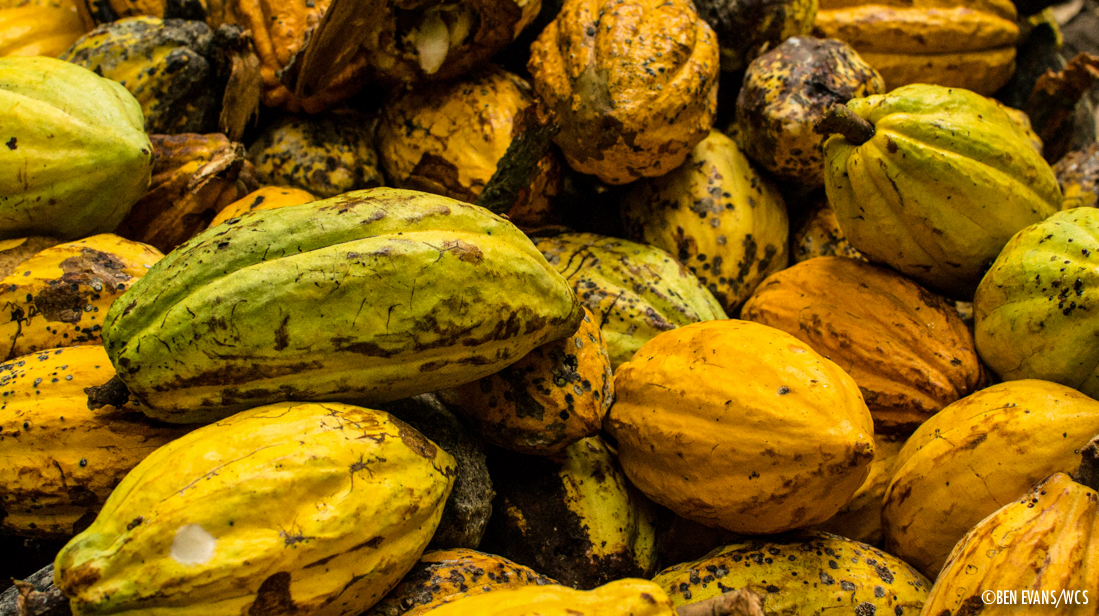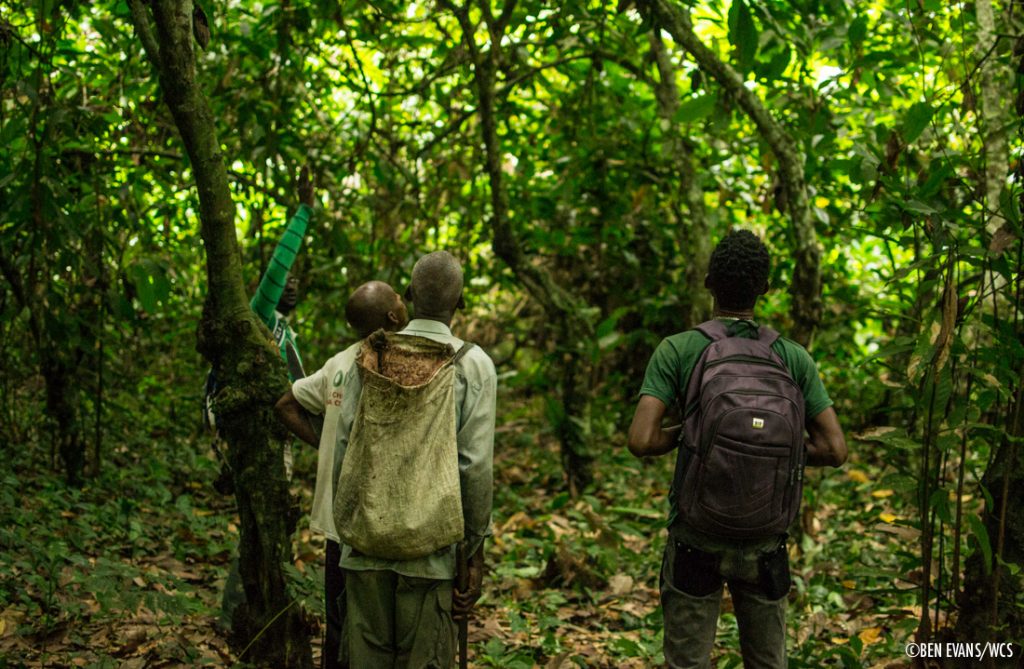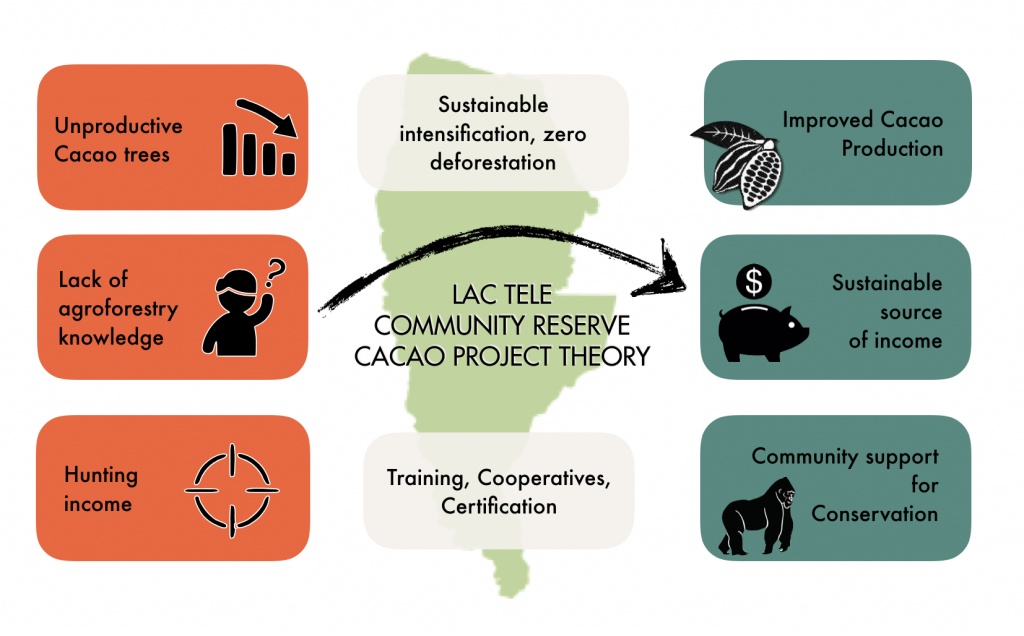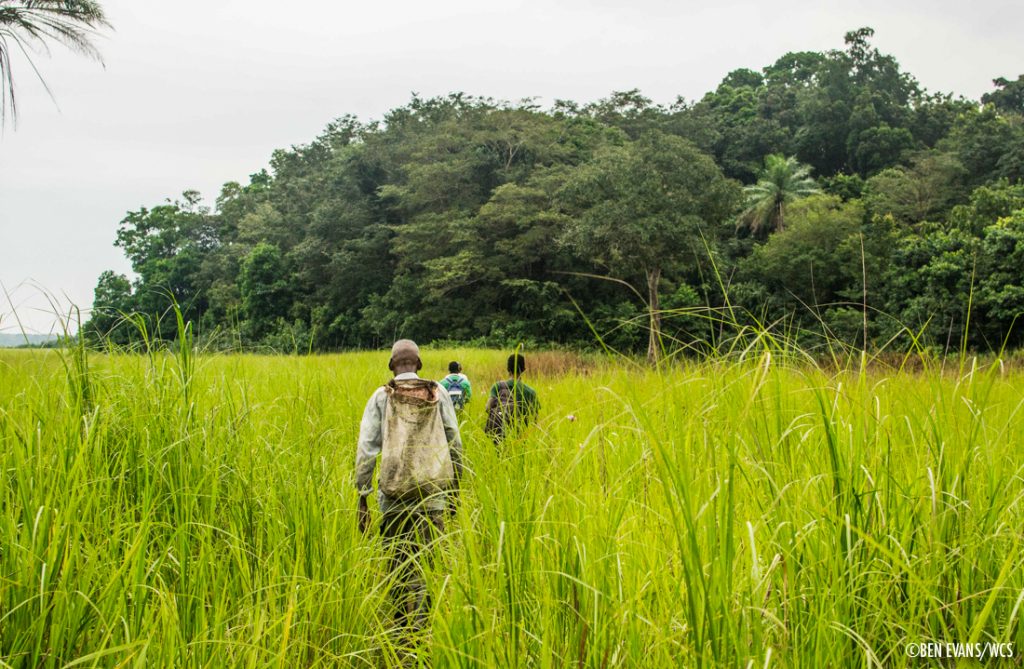
Roots of sustainable income in Lac Tele
If you take a plunge into the forest surrounding many of Lac Télé Community Reserve’s villages, you’ll quickly come across suspiciously neat rows of trees hiding amongst the undergrowth. Look closer, and you’ll see some have strange yellow pods, though many are rotting where they grow. Cacao trees, planted 40 years ago in many cases, are continuing to produce fruit.
Ask anyone from the older generations in the reserve’s villages about cacao, and they respond with fond memories; all of the older grander houses in the Reserve were built on the back of cacao money, they say. After the collapse of the national cacao board in the 1980’s, government extension services and purchasing systems went with it, leaving a long period with no-one for the Reserve’s growers to sell to. The result? Pods rotting on trees, fed in part by a loss of technical knowledge around clearing plantations, partly by reduced incentives to do so, due to a lack of buyers. The demise of cacao (and coffee in part) also meant hunting, for trophies such as ivory and meat, whether gorilla or dwarf crocodile, became the main source of cash income again.
”What do you think these houses were built from? Cacao. It gave people access to real money to reinvest. - Gerard Bondeko, Community Conservation Coordinator, LTCR.
The past few years have started to see some glimmers however; two large buyers have started purchasing in the area again, as well as myriad smaller, informal buyers. This potential renaissance could rejuvenate a greatly diminished livelihood, one which has real potential to allow hunters to earn money in something other than from harvesting wild mammal species.
To this end, this August WCS brought in an international cacao expert, who has previously worked on cacao plantations around other protected areas in central Africa. The first of several planned trips supported by USAID’s CARPE programme, he came to evaluate the current state of cacao production in the Reserve, and to plan training and support for its growers. His evaluation: there’s a lot that can be done.
”All cacao fields are currently being mapped out, to ensure that zero net deforestation happens; only old cacao fields or previous cassava plantations are permitted as cacao plantations by village committees.

Firstly, growers can be trained on up-to-date plantation management techniques and harvesting methods which reduce the spread of fungal infections.
Secondly, as the majority of trees are past their prime (over 30-40 years) and are older, less productive varieties, WCS will bring in new varieties to grow up in the shade of the previous generation. Village nurseries will be established, allowing local production of seedlings. Once these trees reach maturity, the old ones can be removed for firewood. All cacao fields are currently being mapped out, to ensure that zero net deforestation happens; only old cacao fields or previous cassava plantations are permitted as cacao plantations by village committees.
Thirdly, growers in a village can group together to negotiate prices with larger buyers, assuring them a better deal on their hard-earned products. WCS staff will support growers to have better access to market information, such as weekly prices in regional reselling hubs.

One worry with agroforestry products in rainforest reserves is that it becomes too successful and pushes up demand for land, in this case rainforest; another that global prices are too unstable to provide long-term capital for growers.
WCS’s strategy to tackle these risks is twofold: whilst cacao prices have had a rocky time on global markets in the past few years, WCS is investigating the possibility of establishing a local certification scheme for growers who agree to reduce hunting effort and stick with the zero-deforestation commitment over time. These growers would see stable prices negotiated at Reserve-level with a national buyer, one who has commercial sustainability concerns. If they break their contracts, clearing more fields than permitted by village natural resource committees, they lose access to group-negotiated prices and on-going training and support.

This November will see the training and establishment of nurseries, just as the rainy season sets upon the Reserve. This time next year, a new generation of cacao trees will be spreading their leaves in the cool under canopy, ready to take over from the previous cohort, hopefully providing for the Reserve’s households for years to come.

